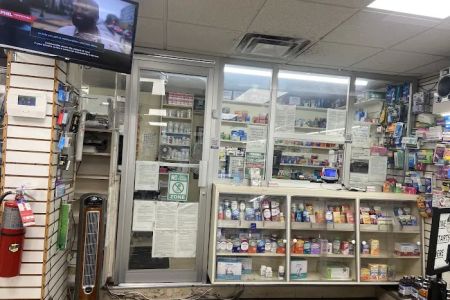How to Review Pharmacy Safety Records: A Step-by-Step Guide
As a consumer or a healthcare professional, it's important to have confidence in the safety and reliability of the pharmacies you engage with. Reviewing pharmacy safety records is an essential part of ensuring the integrity of the pharmacy’s operations. Whether you're looking into a local pharmacy or assessing the practices of a larger chain, understanding how to effectively review pharmacy safety records can make a significant difference in safeguarding your health and well-being. In this article, I’ll walk you through the process of reviewing these records to make informed decisions.
1. Understand the Importance of Pharmacy Safety Records
Pharmacy safety records are crucial documents that track a pharmacy’s compliance with local, state, and federal regulations regarding medication dispensing, storage, and handling. These records include a wide range of data, from patient prescriptions to medication safety protocols, adverse reactions, and incidents of medication errors. A pharmacy’s safety records provide transparency into its daily operations and its commitment to ensuring that customers receive safe, accurate, and effective medications.
2. What to Look for in Pharmacy Safety Records
When reviewing pharmacy safety records, it’s essential to look for several key elements that demonstrate the pharmacy’s attention to detail and its commitment to safety. Below are the main aspects you should focus on:
- Regulatory Compliance: Ensure that the pharmacy complies with the guidelines set by regulatory bodies like the Food and Drug Administration (FDA) and the Drug Enforcement Administration (DEA). You should see records that reflect adherence to these guidelines, including medication storage, labeling, and dispensing procedures.
- Medication Errors and Adverse Reactions: Look for a record of any medication errors or adverse reactions that have been reported. These documents should include details of the incident, the actions taken, and the outcomes. Frequent or unaddressed errors are red flags.
- Staff Training and Qualifications: Review records related to the training and qualifications of the pharmacy staff. Ensure that all pharmacists and technicians are licensed, trained, and regularly updated on best practices in medication handling.
- Inventory Management and Control: The pharmacy should have a system in place to track its inventory of controlled substances. Look for audits and logs that demonstrate proper inventory management to prevent theft, loss, or misuse of medications.
- Patient Safety Programs: A good pharmacy will have programs in place to support patient safety, such as counseling programs, drug interaction checks, and patient medication records. These should be documented clearly.
3. How to Access Pharmacy Safety Records
Accessing pharmacy safety records might seem daunting, but it’s an essential part of ensuring that your chosen pharmacy meets high safety standards. Here’s how you can access these important documents:
- Request Directly from the Pharmacy: Start by asking the pharmacy for information about their safety practices. Many pharmacies are required by law to provide safety records upon request, particularly when it comes to drug dispensing and incident reports.
- State Health Department: If you’re looking for more detailed records or a history of violations, the state’s health department can be an excellent resource. Many states have online databases where you can search for any actions or sanctions taken against a pharmacy.
- Third-Party Review Services: Some third-party services specialize in reviewing and rating pharmacies based on their safety records. These can provide a broad perspective on a pharmacy’s reputation and reliability.
4. Red Flags to Watch For
While reviewing pharmacy safety records, it's crucial to be aware of any red flags that might indicate potential issues with a pharmacy’s operations. Here are a few warning signs to watch for:
- Frequent Medication Errors: If a pharmacy has a history of repeated medication errors, it could indicate poor practices, such as inadequate staff training, lack of attention to detail, or poor inventory management.
- Adverse Reactions Without Resolution: If adverse reactions are frequently reported but not addressed appropriately, it suggests a lack of accountability and patient safety concerns.
- Inconsistent Inventory Audits: A lack of consistent or transparent inventory management could be a sign of mismanagement or even illegal activity, such as medication diversion.
- Non-Compliance with Regulations: If the pharmacy fails to meet the regulations set by health authorities, this is a serious red flag. Non-compliance can affect the quality of care and patient safety.
5. Case Study: A Pharmacy Safety Incident
Let me share a real-world example to underscore the importance of reviewing pharmacy safety records. A friend of mine had been experiencing unusual side effects from a medication he was prescribed at a well-known pharmacy. Upon further investigation, it was found that the pharmacy had failed to report several adverse reactions similar to his. The safety records showed that the pharmacy had not updated its training protocols, which had contributed to the errors. This incident led to a broader review of the pharmacy's practices, ultimately resulting in improvements in their medication error tracking and staff training.
This case highlights how reviewing safety records can help prevent unsafe situations and ensure that pharmacies are held accountable for their practices. It also shows that consumers have the power to request these records and advocate for better practices.
6. The Role of Technology in Pharmacy Safety
Modern technology plays an essential role in improving pharmacy safety. Many pharmacies use automated systems to track prescriptions, manage inventories, and monitor potential drug interactions. These systems are designed to reduce human error and improve patient safety.
Technology also enables pharmacies to quickly report and address adverse reactions. With the rise of electronic health records (EHR) and automated dispensing systems, patients and healthcare providers can access safety information more efficiently than ever before.
As we continue to move toward more digitized healthcare systems, pharmacy safety is expected to improve, thanks to more accurate, real-time data and better error detection systems. Understanding how these technologies work and how they’re integrated into pharmacy operations can help you assess the safety standards of your pharmacy.
7. Conclusion
In conclusion, reviewing pharmacy safety records is an essential step in ensuring your health and well-being. By understanding what to look for in these records, how to access them, and what red flags to be aware of, you can make informed decisions about the pharmacies you choose. Whether you're a healthcare professional or a concerned consumer, taking the time to review pharmacy safety records can help improve the overall quality of care you receive.
For more information on pharmacy safety or to find the best services in your area, feel free to visit Pharmacy and explore the options available to you.














